How can students strengthen their education by stepping outside their major and trying something new? Two professors — one in studio art and the other in biology — pose this question to undergraduate students in a course combining science and printmaking.

Laura Jones sits along the sprawling windows in the Hanes Art Center print studio, headphones plugged in and paintbrush in hand. In front of her lies an eight-foot piece of fabric, covered edge to edge with relief prints of a variety of plants. Jones carefully fills in each intricate part with homemade dyes made from organic matter like acorns and tea leaves.
The biology undergrad with a studio art minor is working on her final project for the course “Art and Science: Merging Printmaking and Biology” led by art professor Beth Grabowski and biology professor Bob Goldstein. Made up of seven students with biology prerequisites and seven with art prerequisites, the course explores how these two disciplines can influence one another.
Throughout the semester, students used science — like visually interpreting microscope slides and creating images from motion software — as inspiration for printmaking projects.
“One of the lingering questions for us is: What does it mean to think like an artist and think like a scientist?” Grabowski says.
The students, she explains, often find that similarities outweigh the differences.

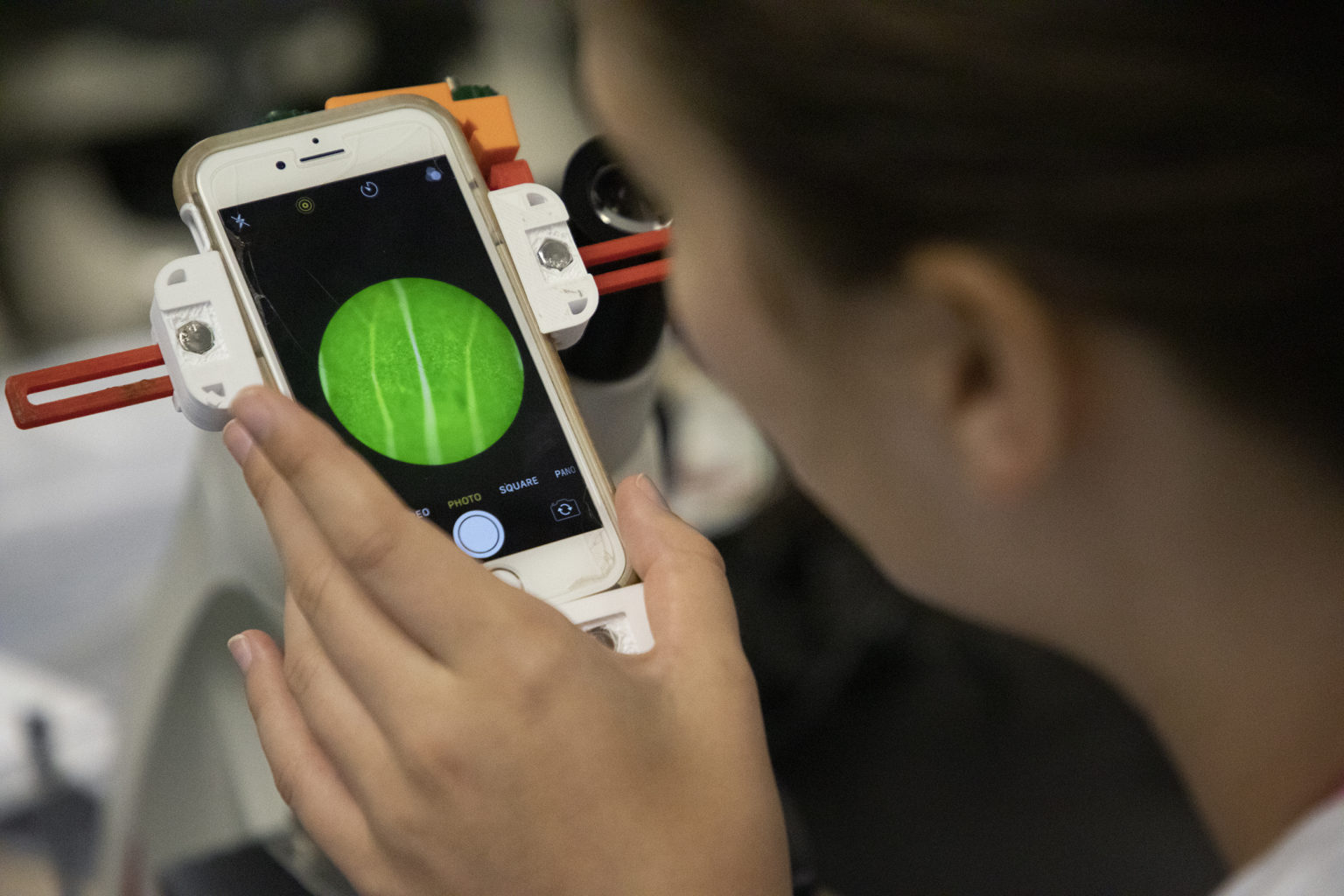
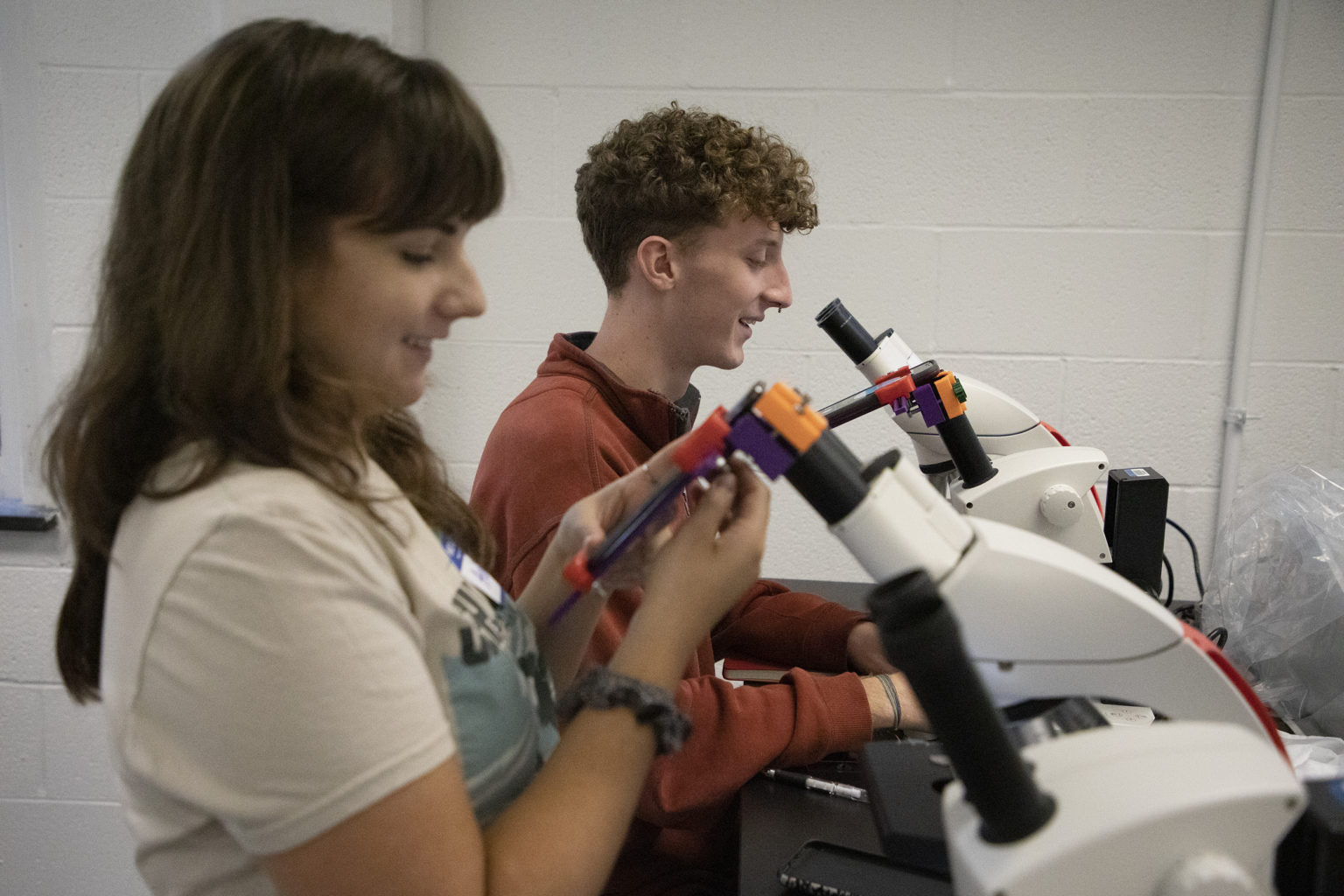

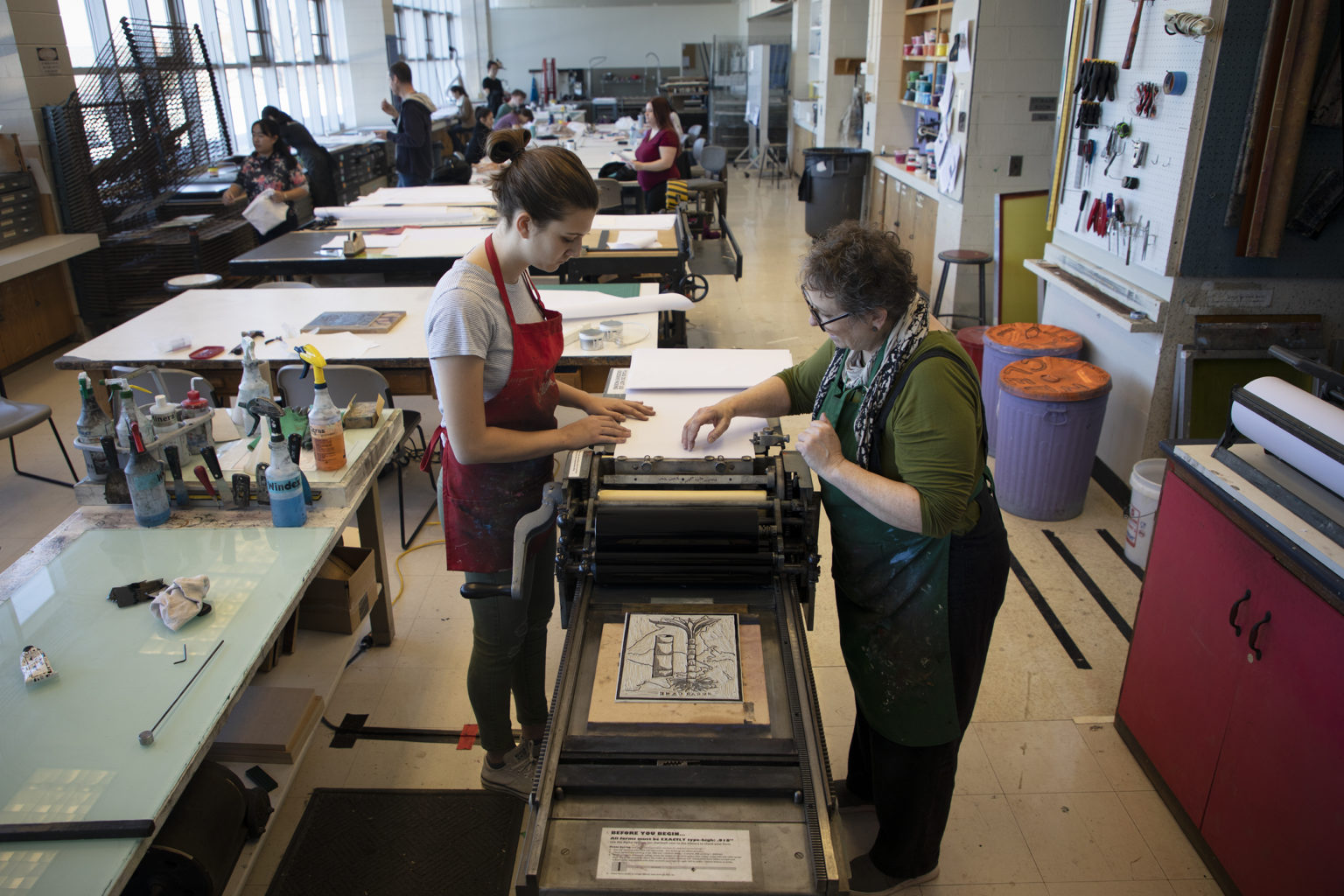
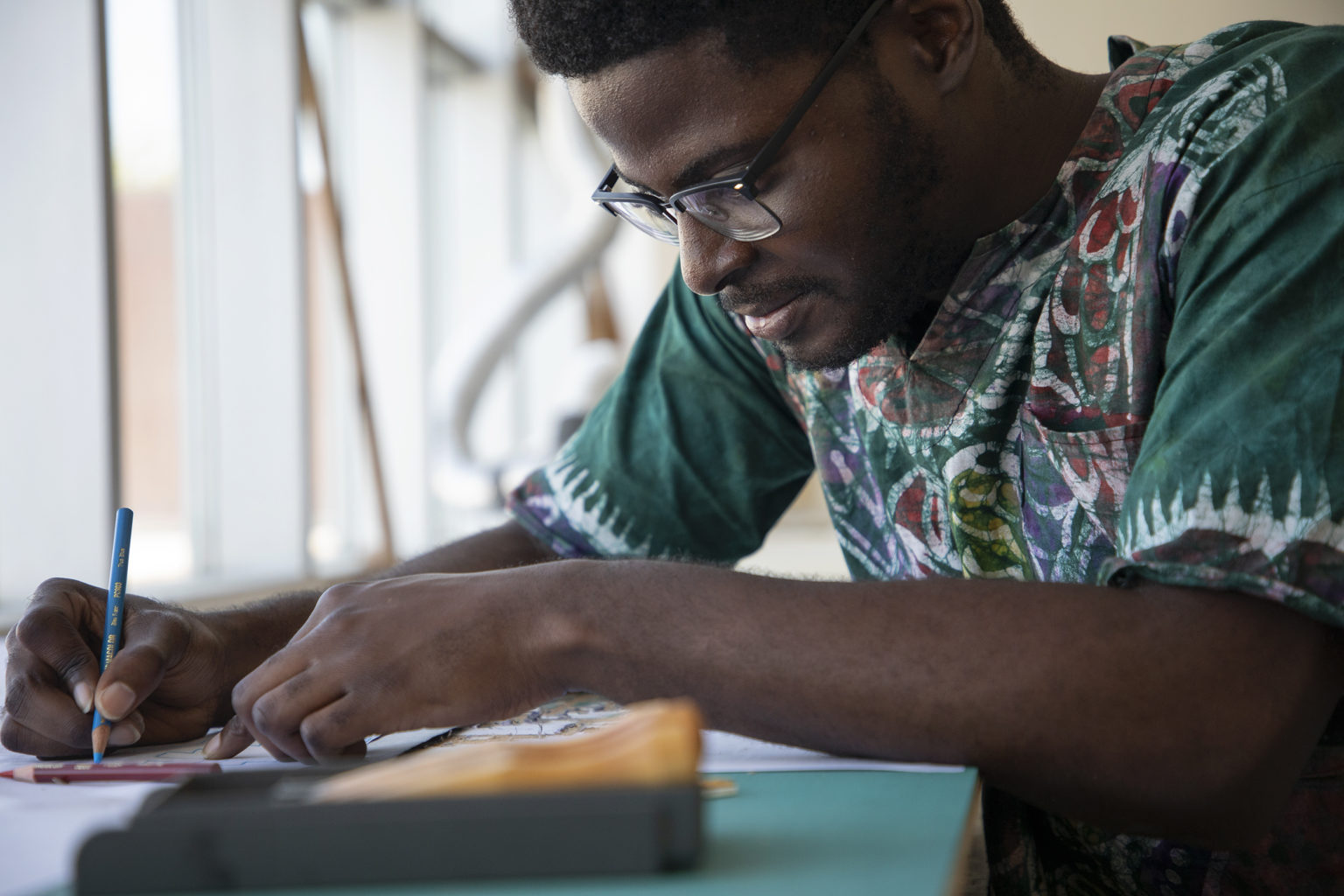
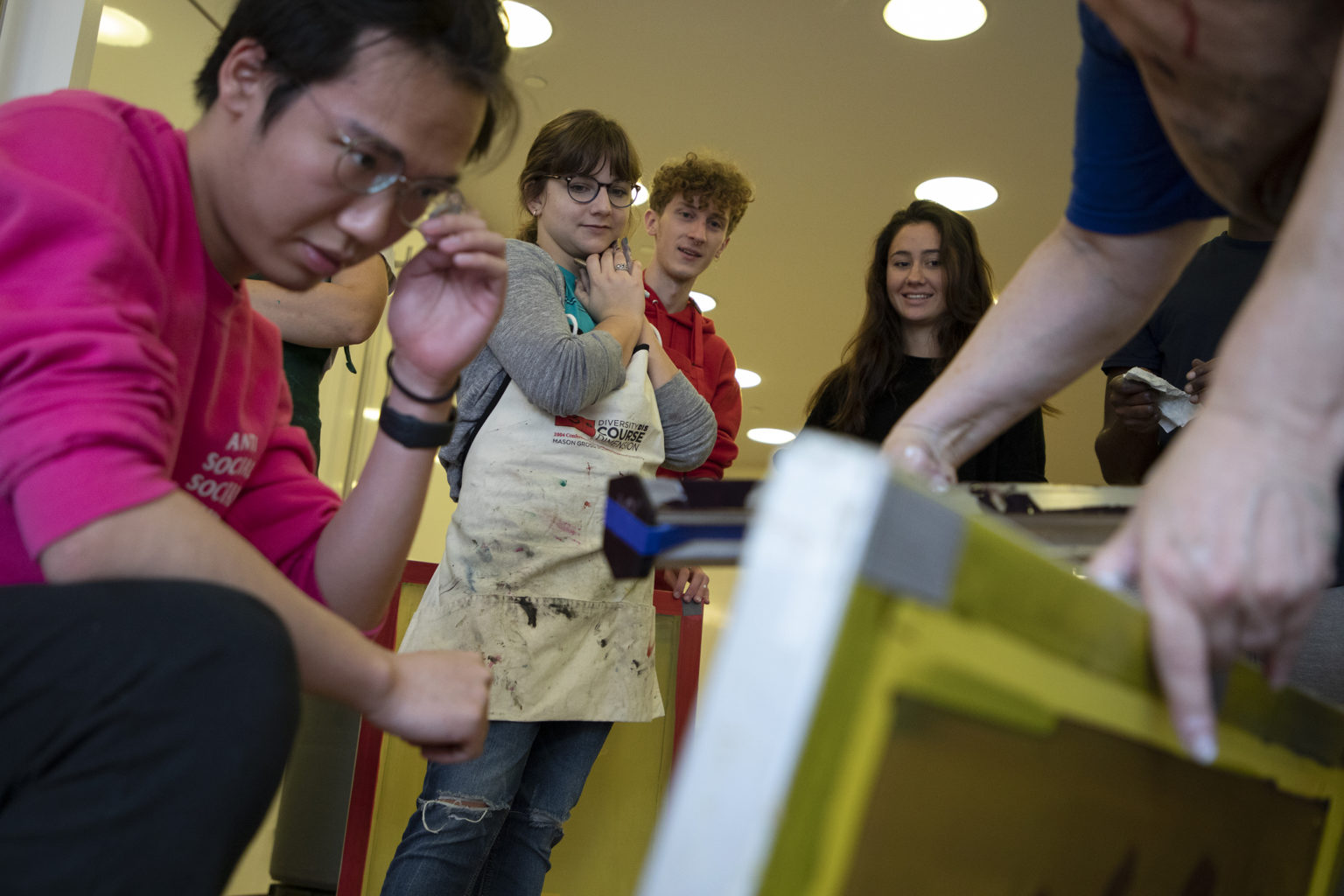

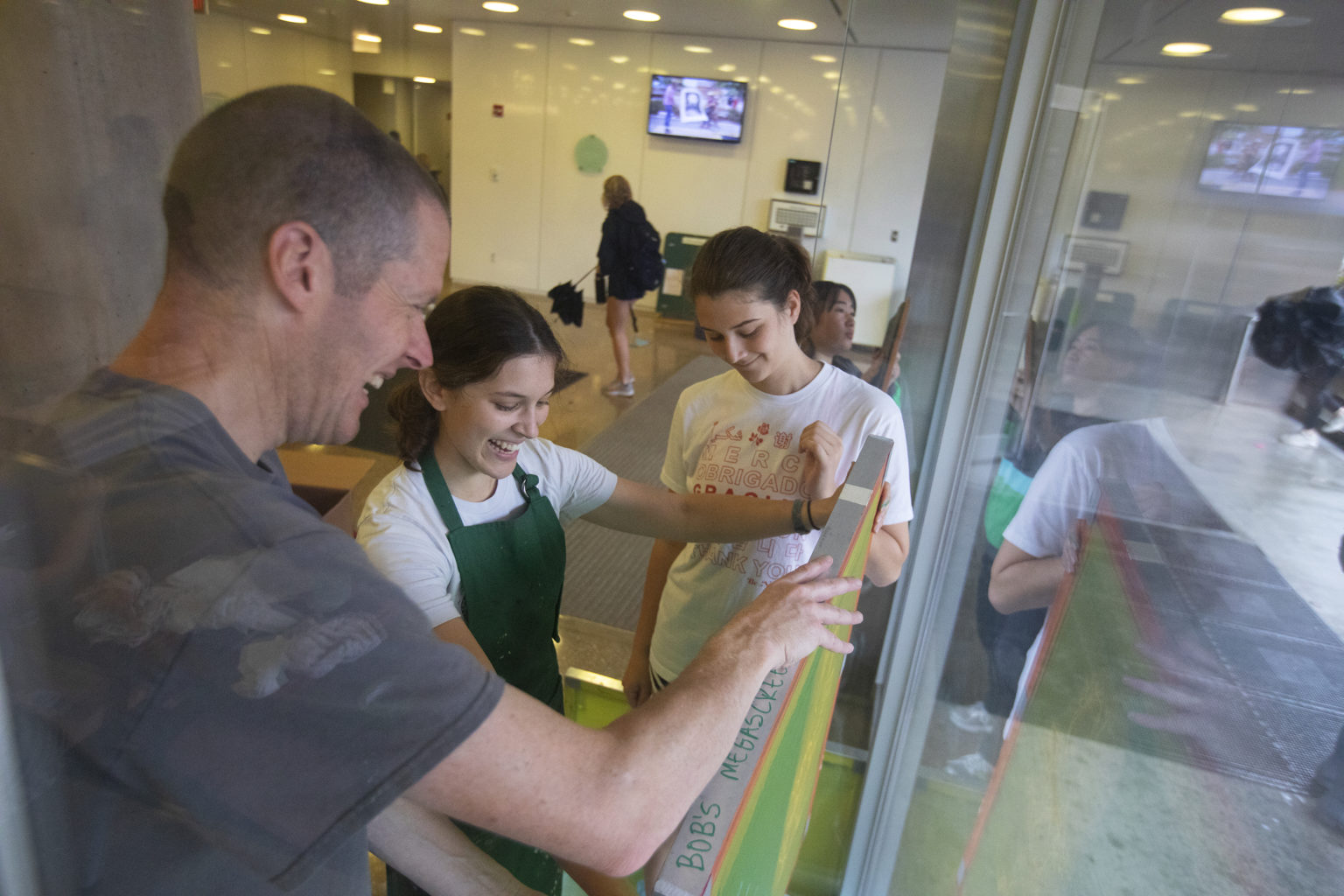
By Megan May, Endeavors
